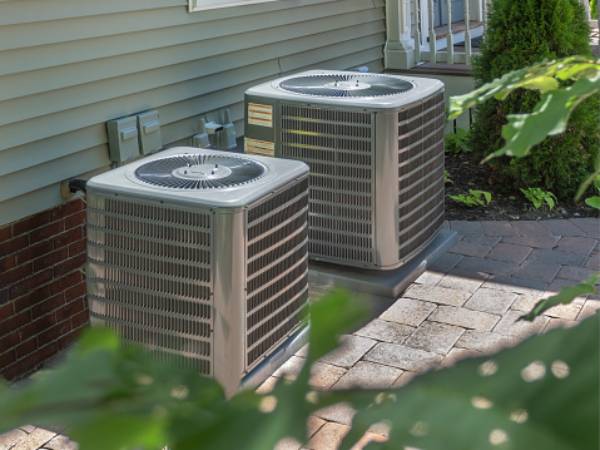
Checklist While Buying ACs
- News
- November 3, 2021
Consider these variables when choosing an air conditioner for your house.
1. Budget is usually a primary driver
- Window ACs are the cheapest options. Remember that the window air conditioner can only cool one room at a time. Portable air conditioners are suggested as you can get one through air conditioning hire services.
- If you need to chill one or two rooms, a ductless or mini-split AC is cheaper. You’ll need to run one ductless system continually to cool the entire home, increasing your energy costs while diminishing its efficiency.
- Window, mini-split, and portable smart air conditioners are all more costly. However, they conserve energy and hence are less expensive to run. Third-party controllers cost about $50-70 in Australia that offer the same or more functions.
- Central air conditioning is the most expensive, but it is also the most effective. These air conditioners outlast portable and window models, but they have a far higher continuous cost.
- The most expensive option, geothermal heating and cooling, pays for itself in energy savings. Geothermal air conditioners are the most efficient and effective air conditioners available. People that spend a lot of money on such a system think it will last them forever.
2. Resource consumption
Invest in an energy-efficient air conditioner to save money. It is also known for its EER rating for its focus on energy efficiency. Double-check that only the most cost-effective option is selected. A higher efficiency rating suggests a more practical approach.
The Seasonal Energy Efficiency Ratio (SEER) is also closely related. The SEER rating of a unit is determined by dividing the cooling output by the total power utilised.
SEER is computed over a lengthy cooling season at multiple temperatures, but EER is calculated at one temperature point. Higher SEER units are more energy efficient.
3. Storage and Maintenance
To lengthen the life of your air conditioner, consider its ease of maintenance. Similarly, buy an air conditioner that suits your home’s size. The market offers a broad selection of models and brands. Your decision will be based on space requirements, budget, and ease of use and maintenance. You can also opt for air conditioning hire services for better maintenance.
4. Cooling Power
This standard might help you buy an air conditioner. An air conditioner’s cooling or heating capability is measured in BTUs. The higher a unit’s BTU rating, the better it can chill or heat.
A BTU capacity of 6,000-12,000 is adequate for a normal living room. Consider the size of your space when searching for an air conditioner; you save electricity while still getting the most out of your HVAC system.
Portable, light air conditioning
Window and portable air conditioners share many similarities. Similarly, all components are housed in a single free-standing unit that may be transported from room to room. All you need is a window and a power outlet to exhaust the unit’s exhaust air.
Consider a portable unit if you need temporary cooling and can’t install a window or split air conditioner. Smaller ones may be used in kennels or toilets. Single-hose portable air conditioners may exhaust air from a room. Alternatively, a dual-hose system draws air from outside, cools the compressor, and then exhausts the cool air inside.
Because a portable unit is utilised indoors, an evaporator fan is continually operating to eliminate moisture.
Portable air conditioners have several benefits:
- Setup is quick and easy.
- They are portable and light.
- They are not permanent.
- An excellent way to cool a particular region
- It’s easy to store while not in use.
Cons of portable air conditioners:
- These devices produce a lot of noise while functioning.
- Large rooms are tough to cool.
- When used near a window, the hose obstructs the bottom section of the window.
Home A/C Units
This kind of air conditioning is suitable for large homes with several rooms to cool. Central air conditioners employ a split system that pumps chilled air via ducts to cool your home. Alternatively, you can rent ACs through air conditioning hire services to make maintenance easier.
The system’s division implies it has two fundamental components. The outer unit has a condenser and compressor. The exterior unit has evaporator coils and an air handler. Using refrigerant, central air conditioning removes heat from the inside air. Cool air enters via the vents to replace the heated air brought in from inside.
Programmable thermostats and central air conditioners may create a smart home.
It has the following benefits:
- It creates a more regulated and cooler environment across the house in the shortest period feasible by cooling all connected rooms at once.
- It’s far more comfortable to live there since cool air is pumped throughout the residence to reduce humidity.
Cons of central air conditioning include:
- It takes a lot of power; thus, it costs extra.
- These units may be rendered useless if the ducting is faulty.
- Some people dislike having an AC unit outdoors, but you can permanently hide it in your yard.
- You will be required to hire air conditioning services for its installation that can cost 500 Australian Dollars.